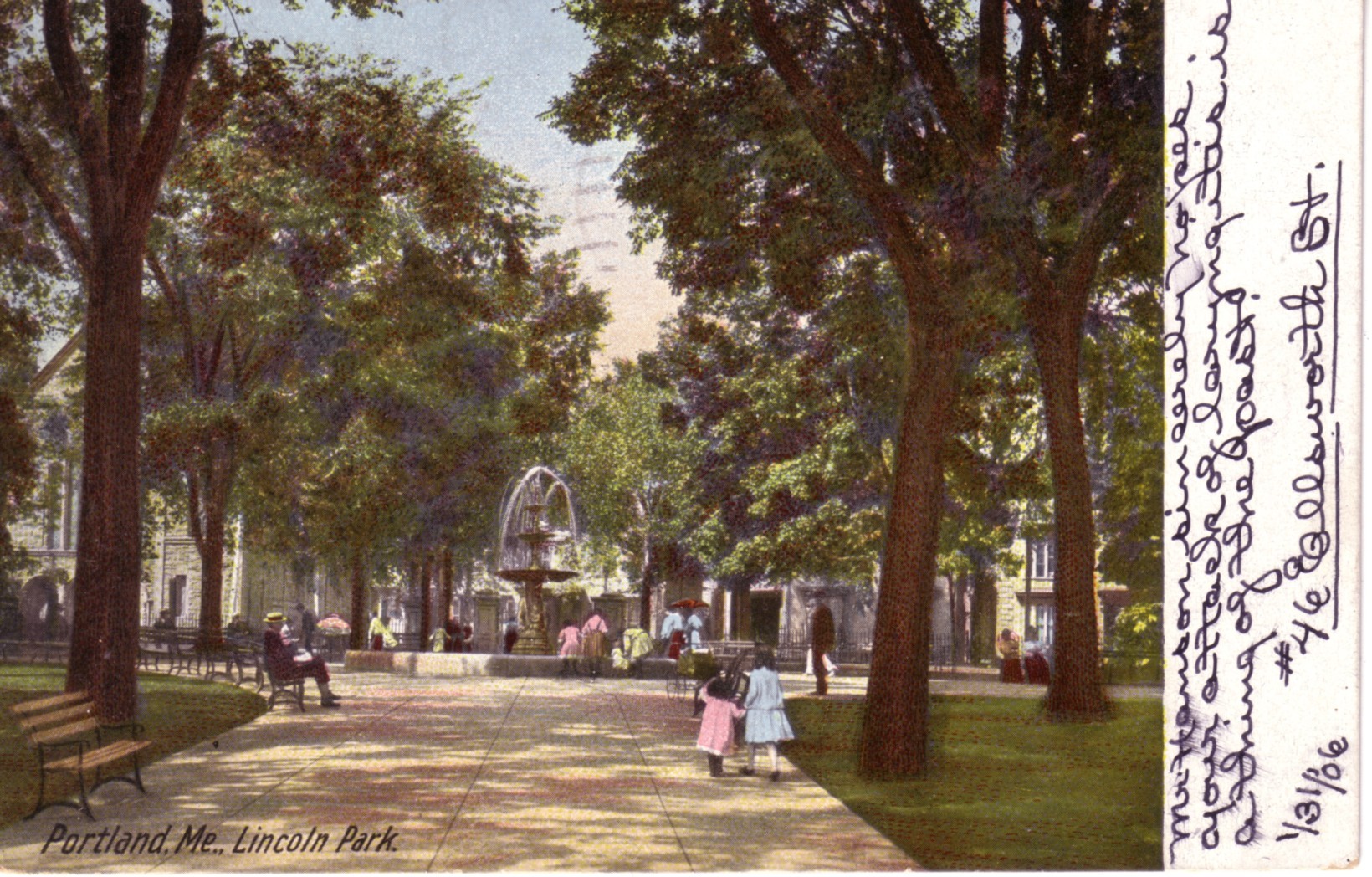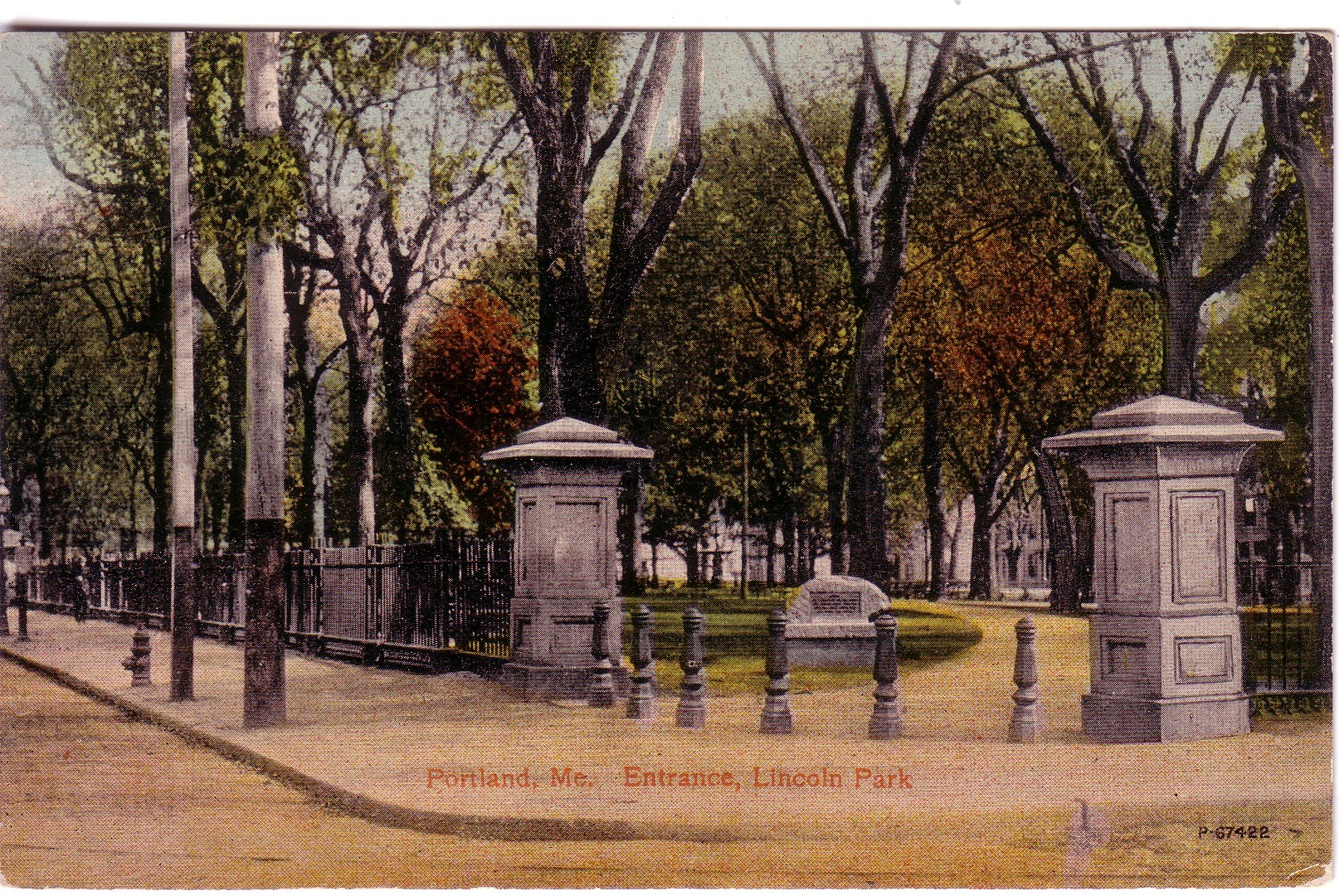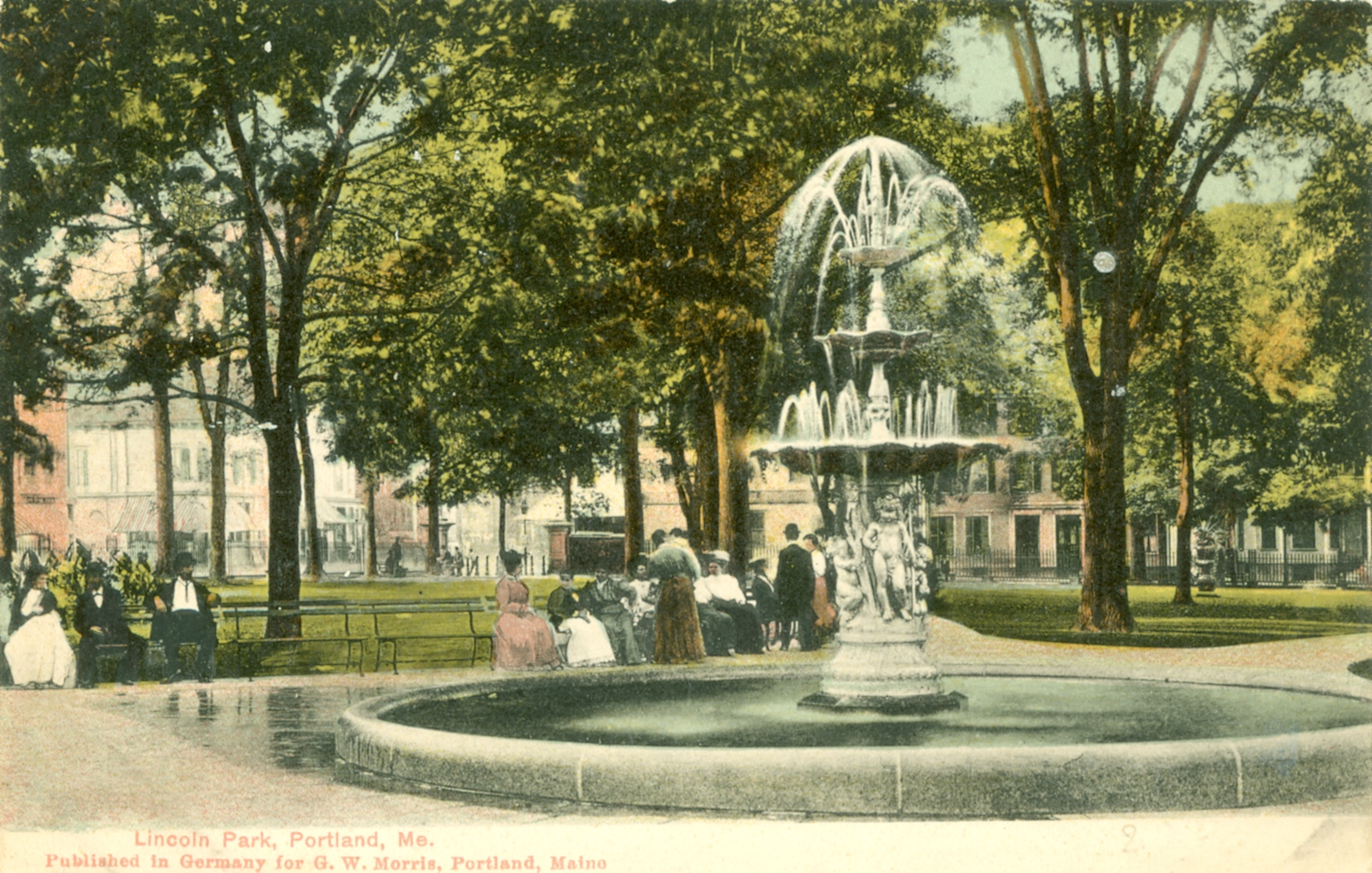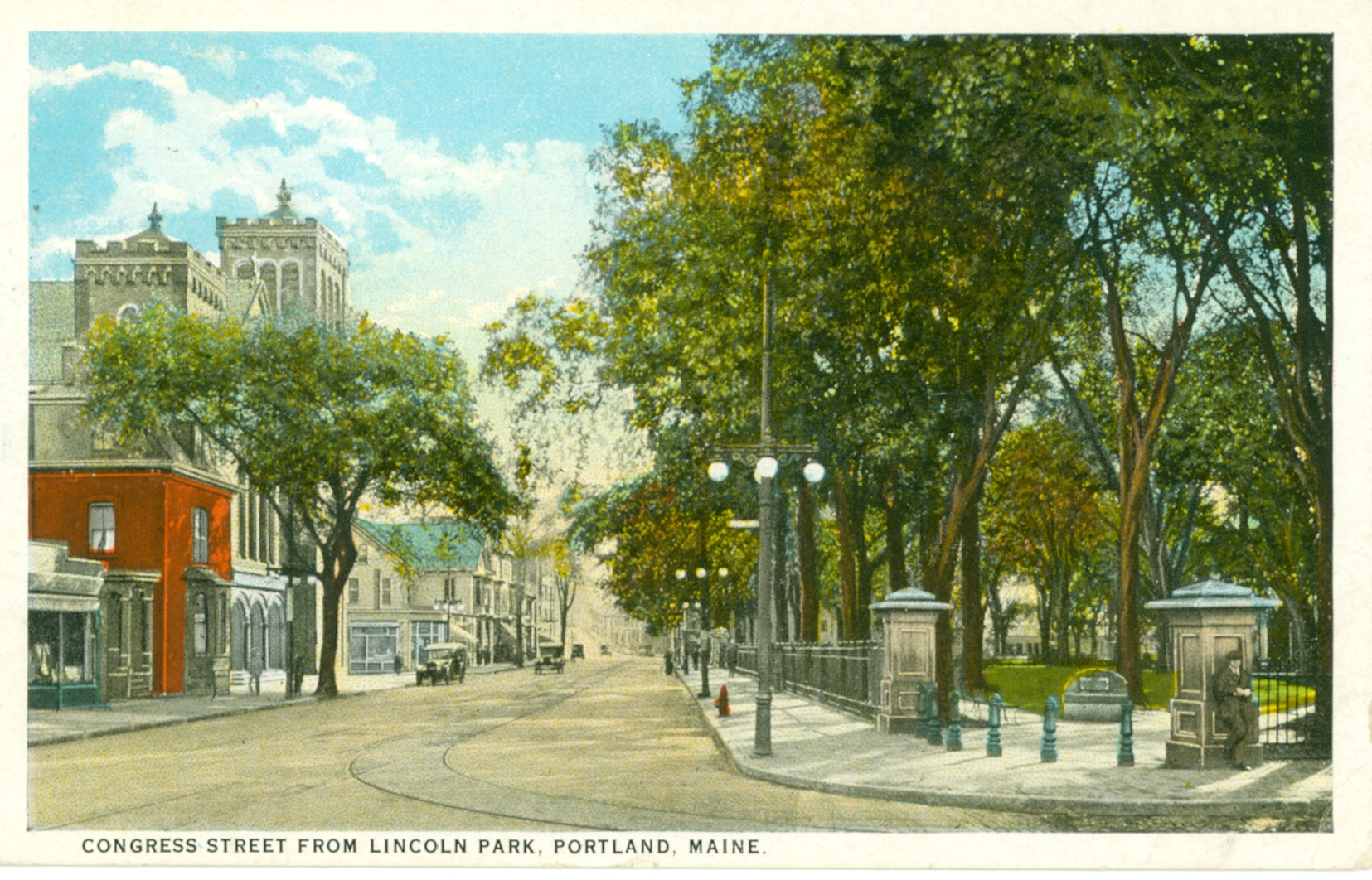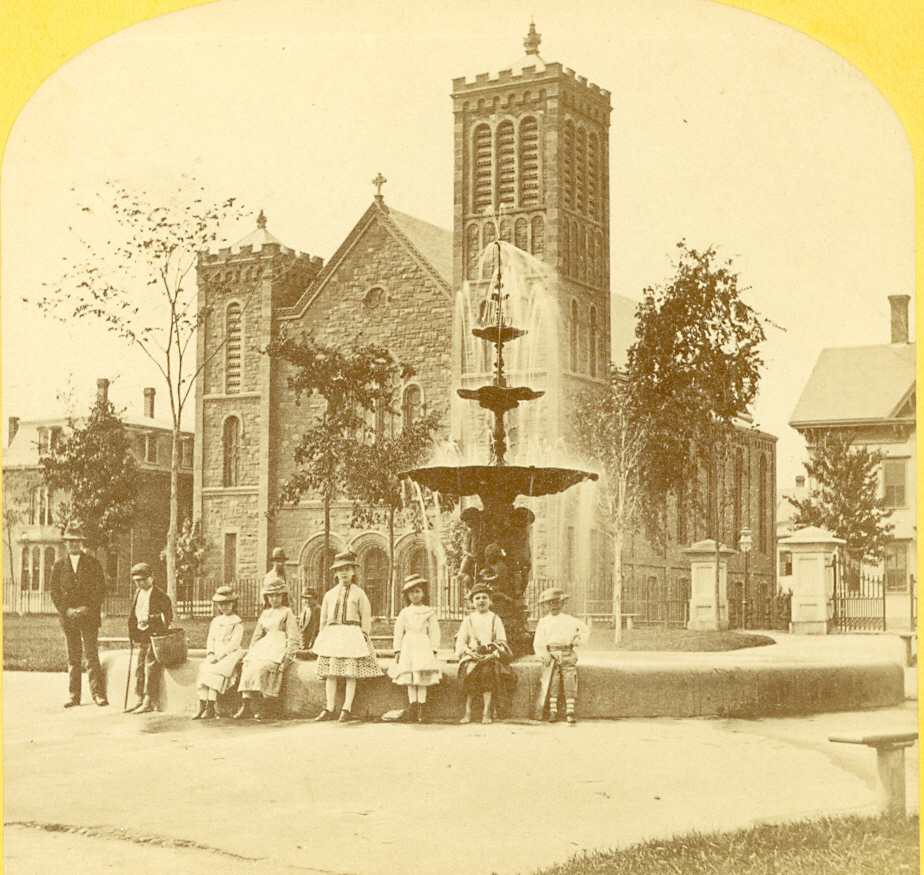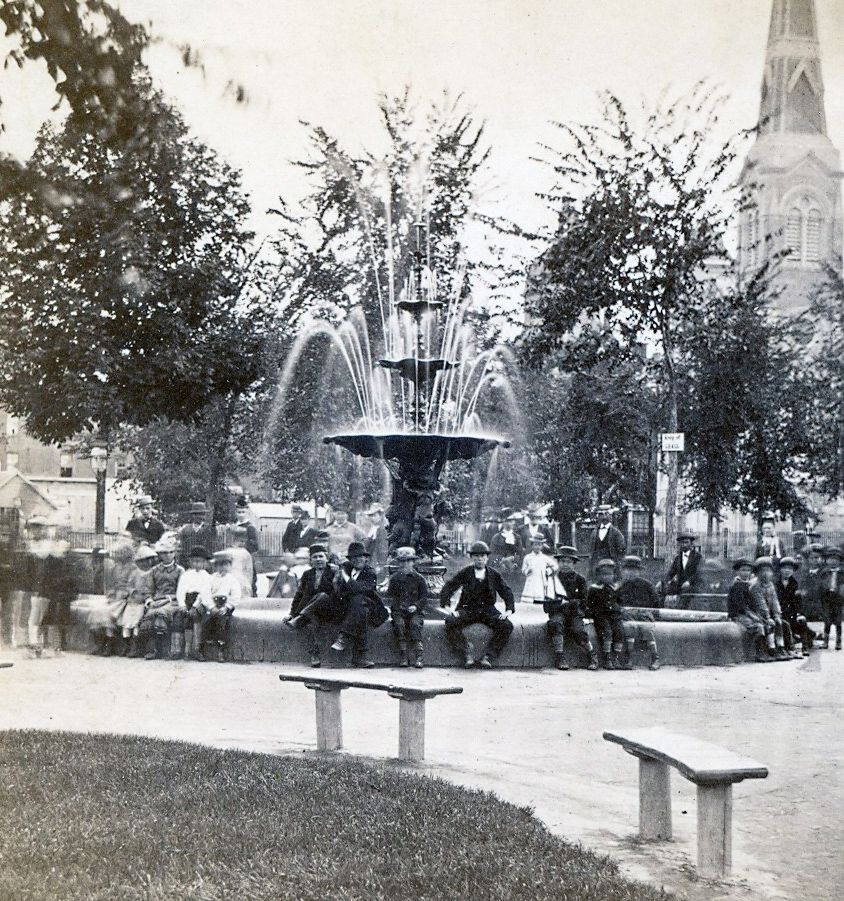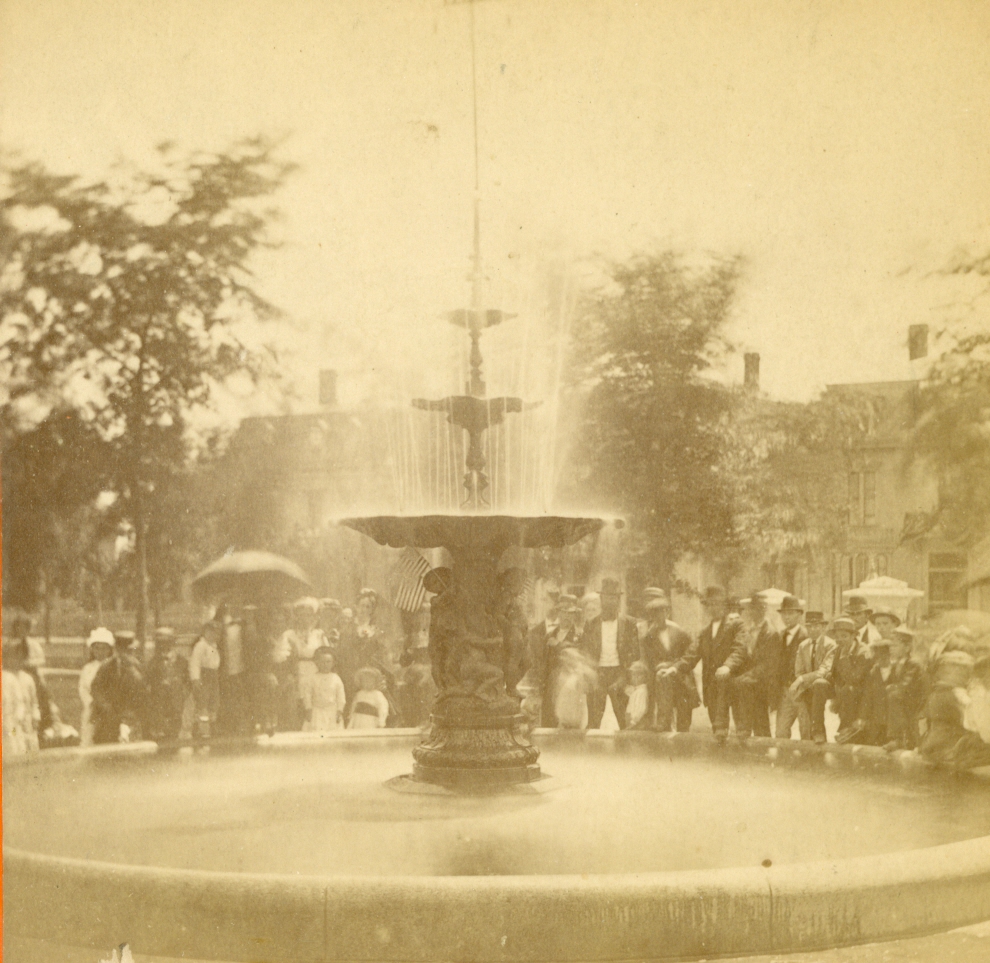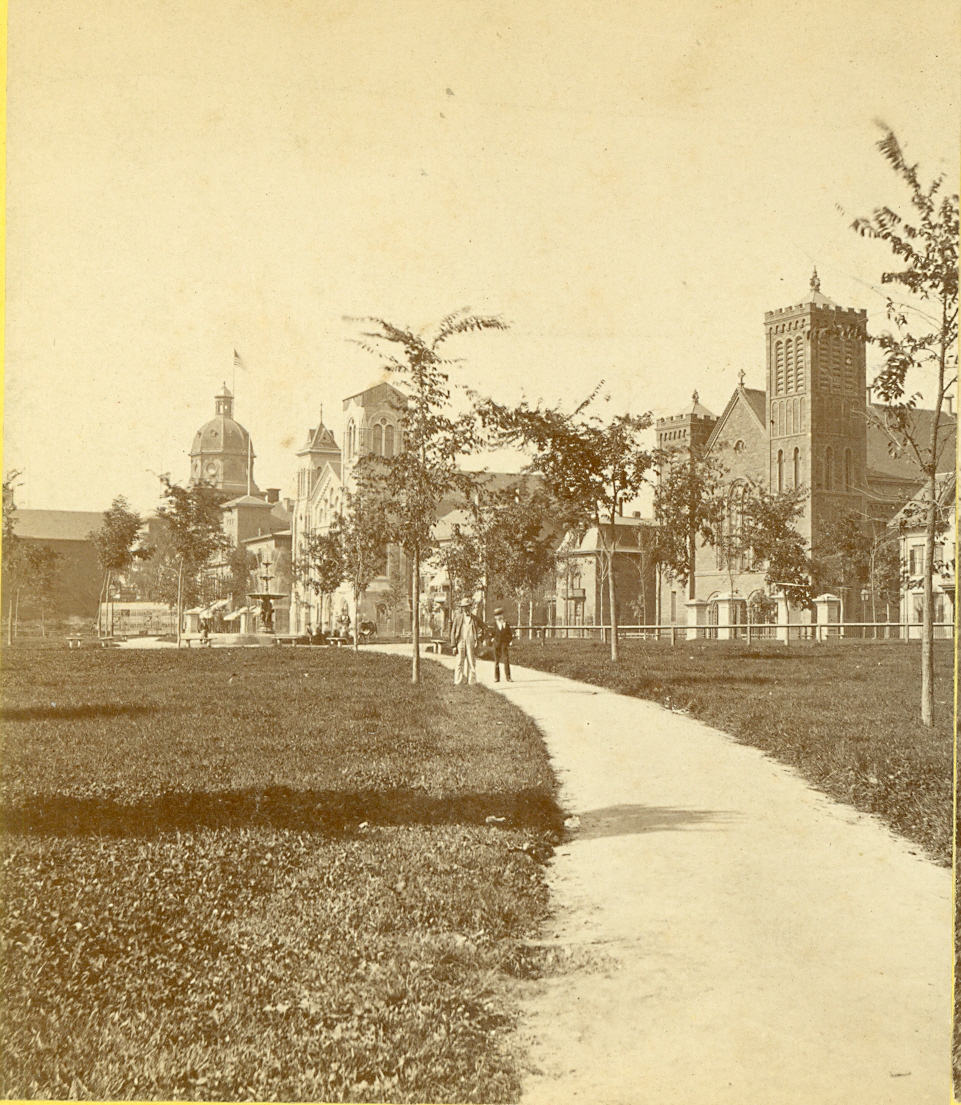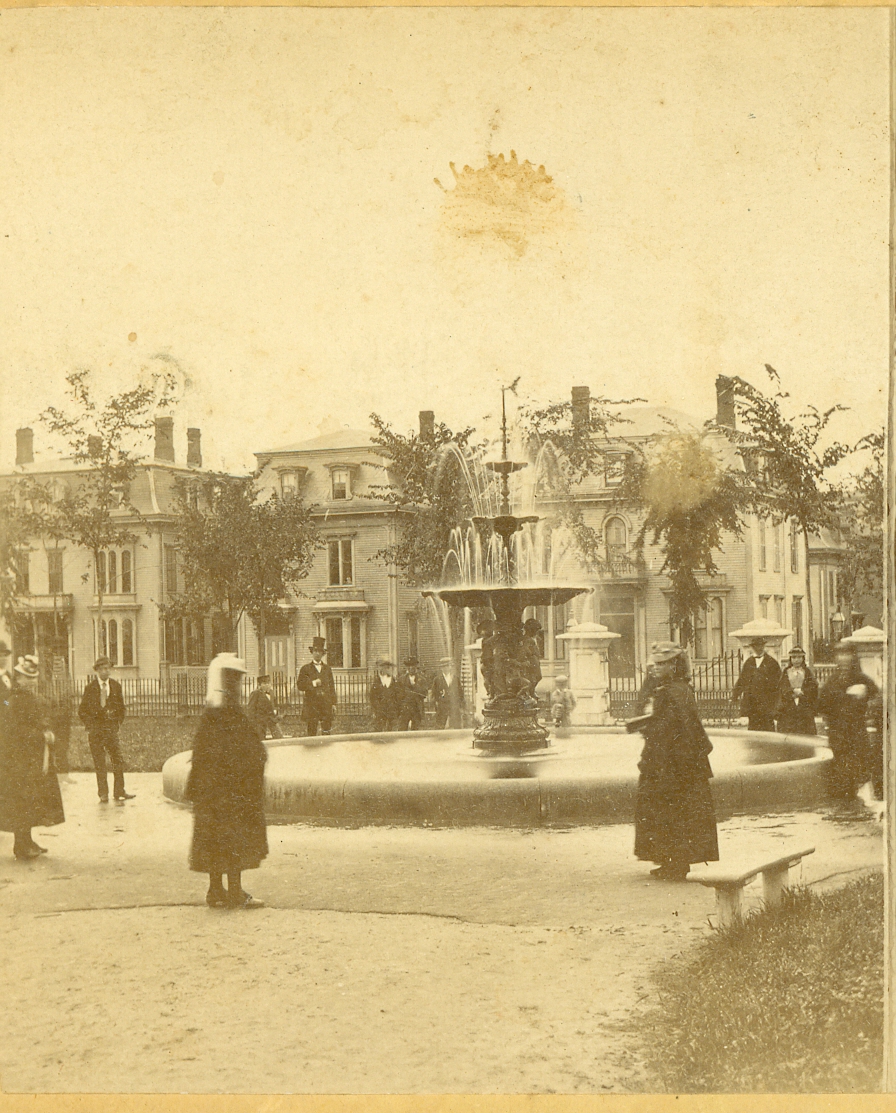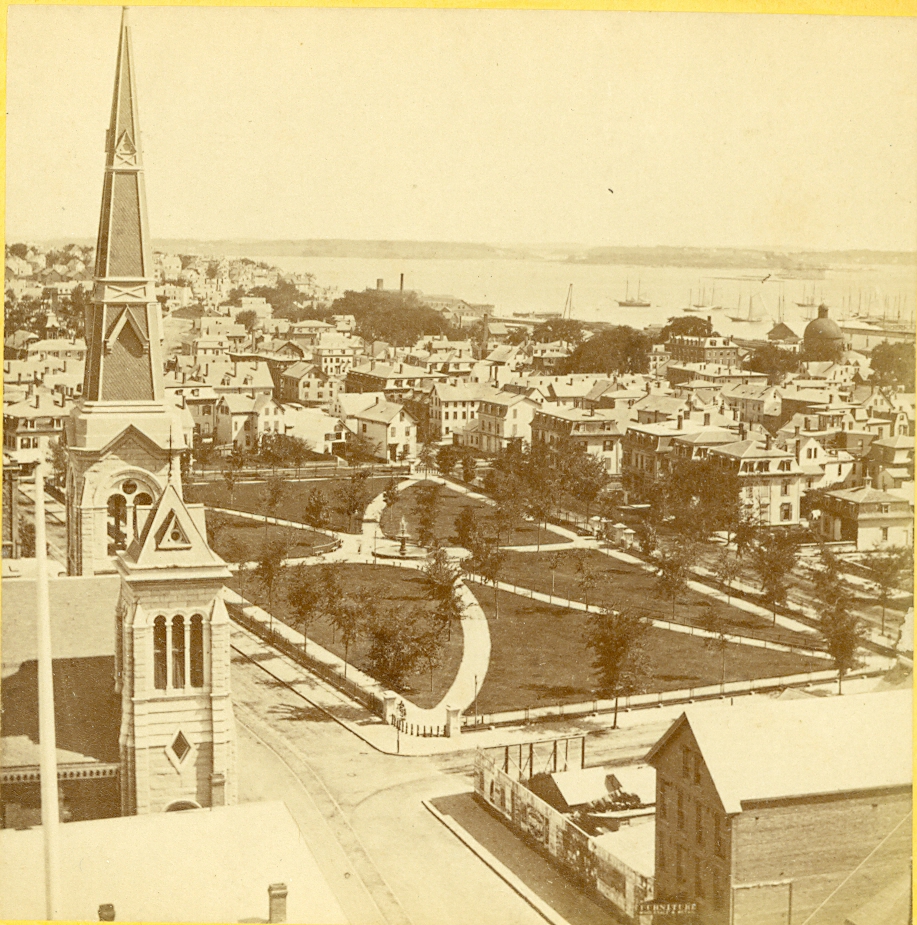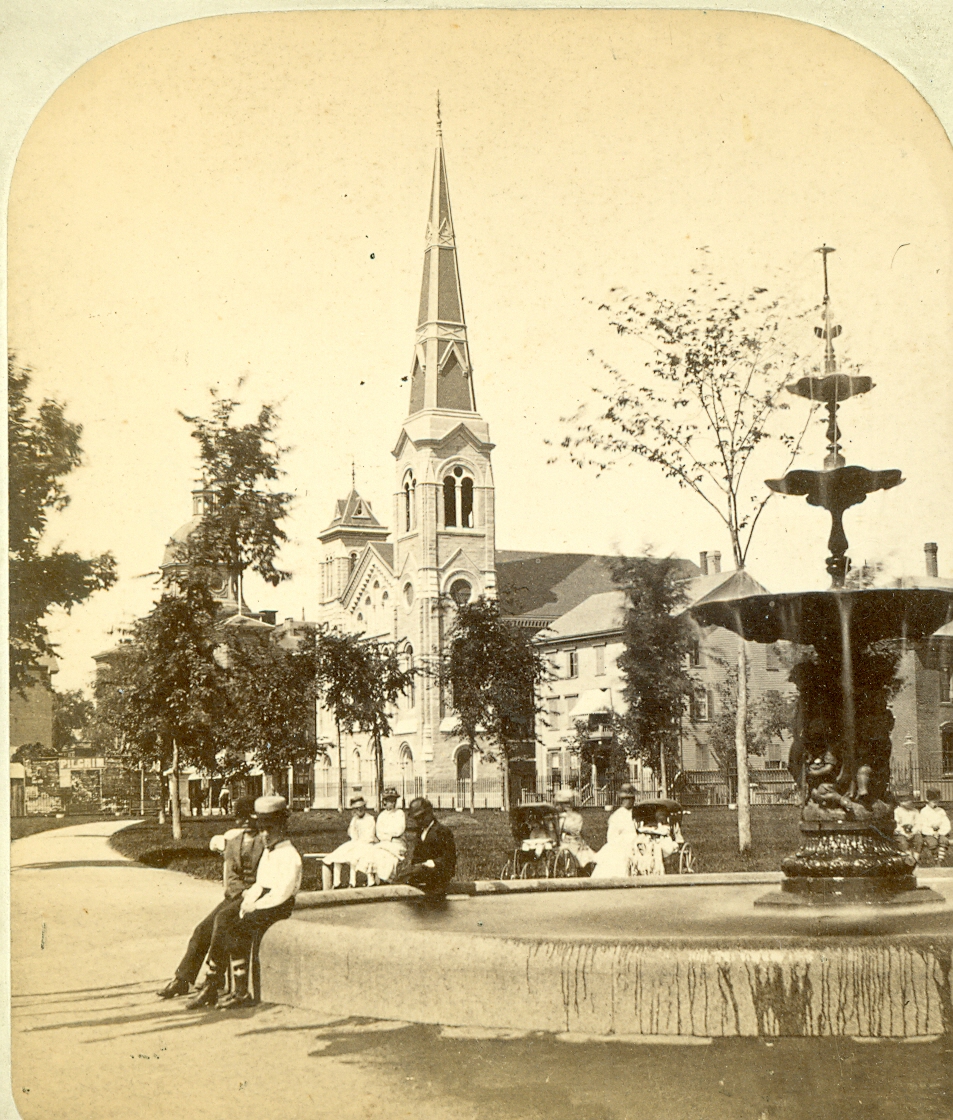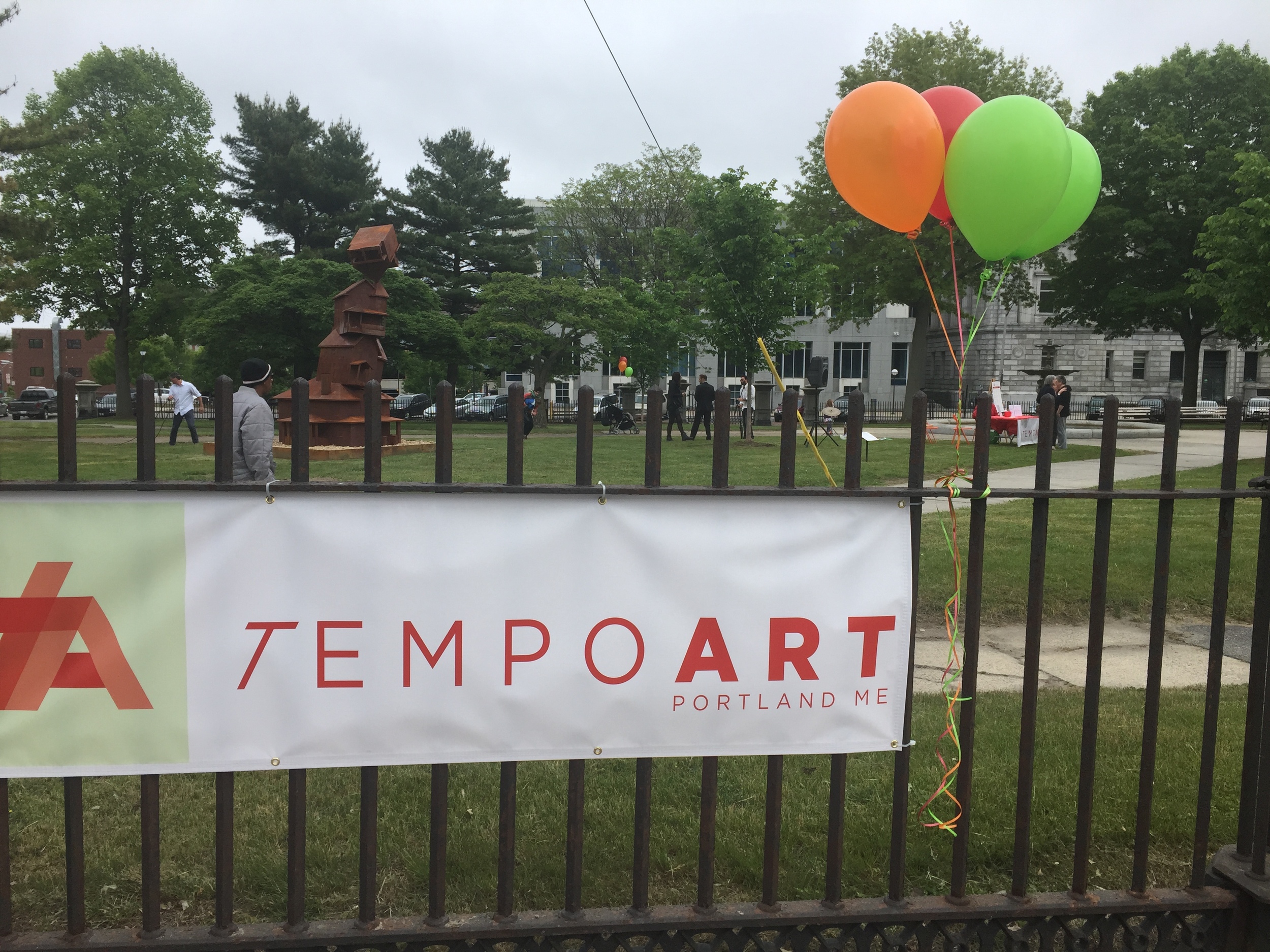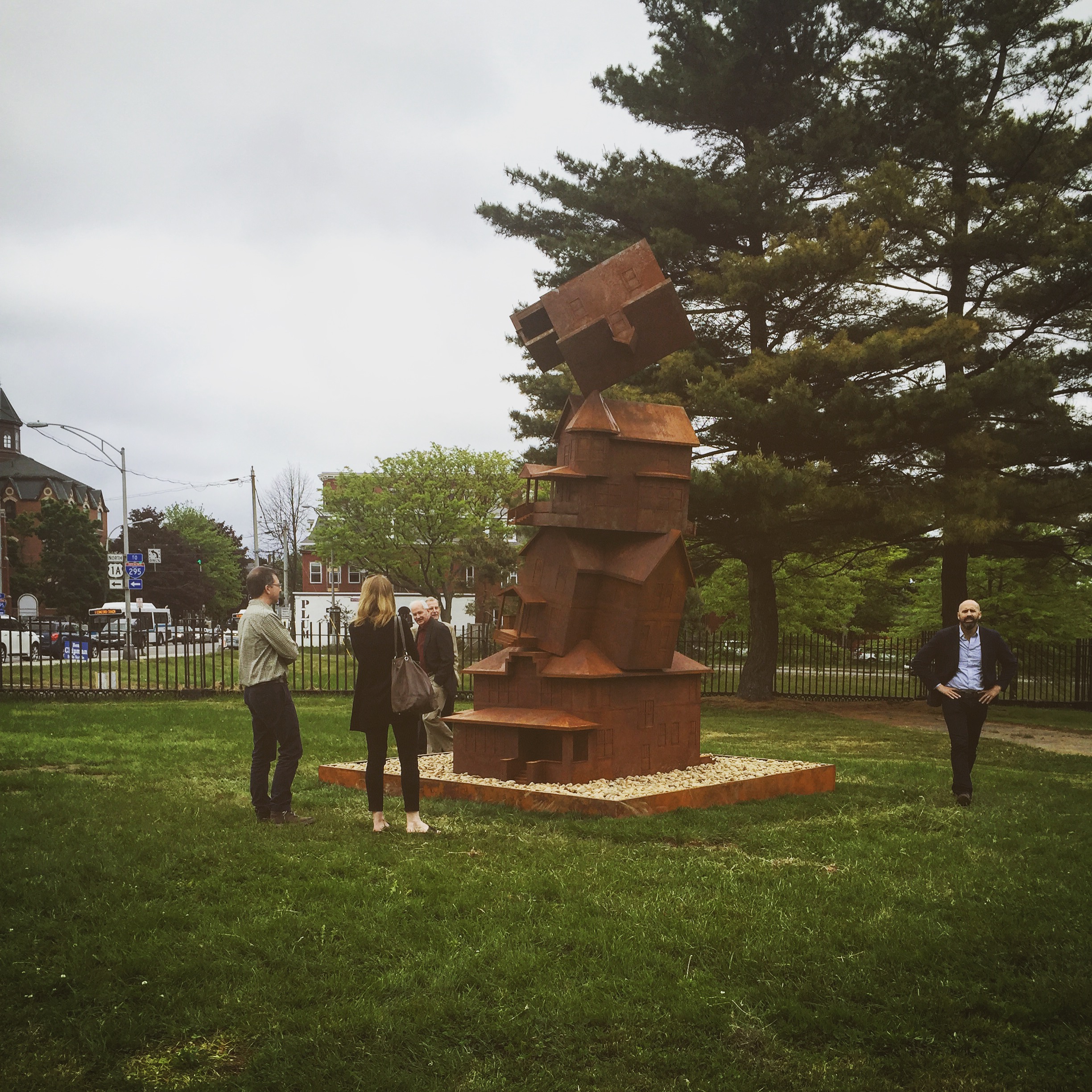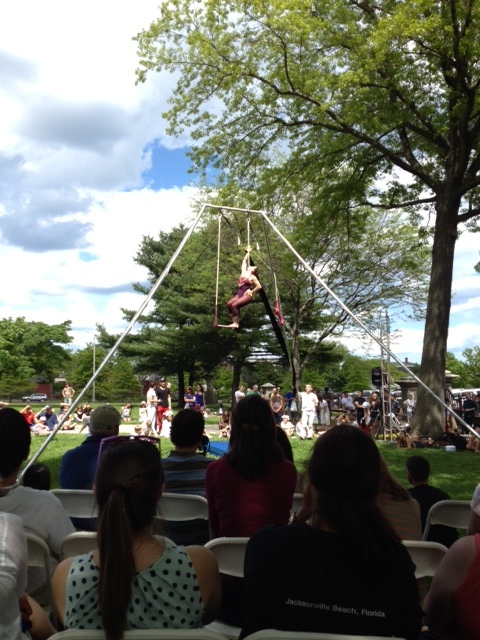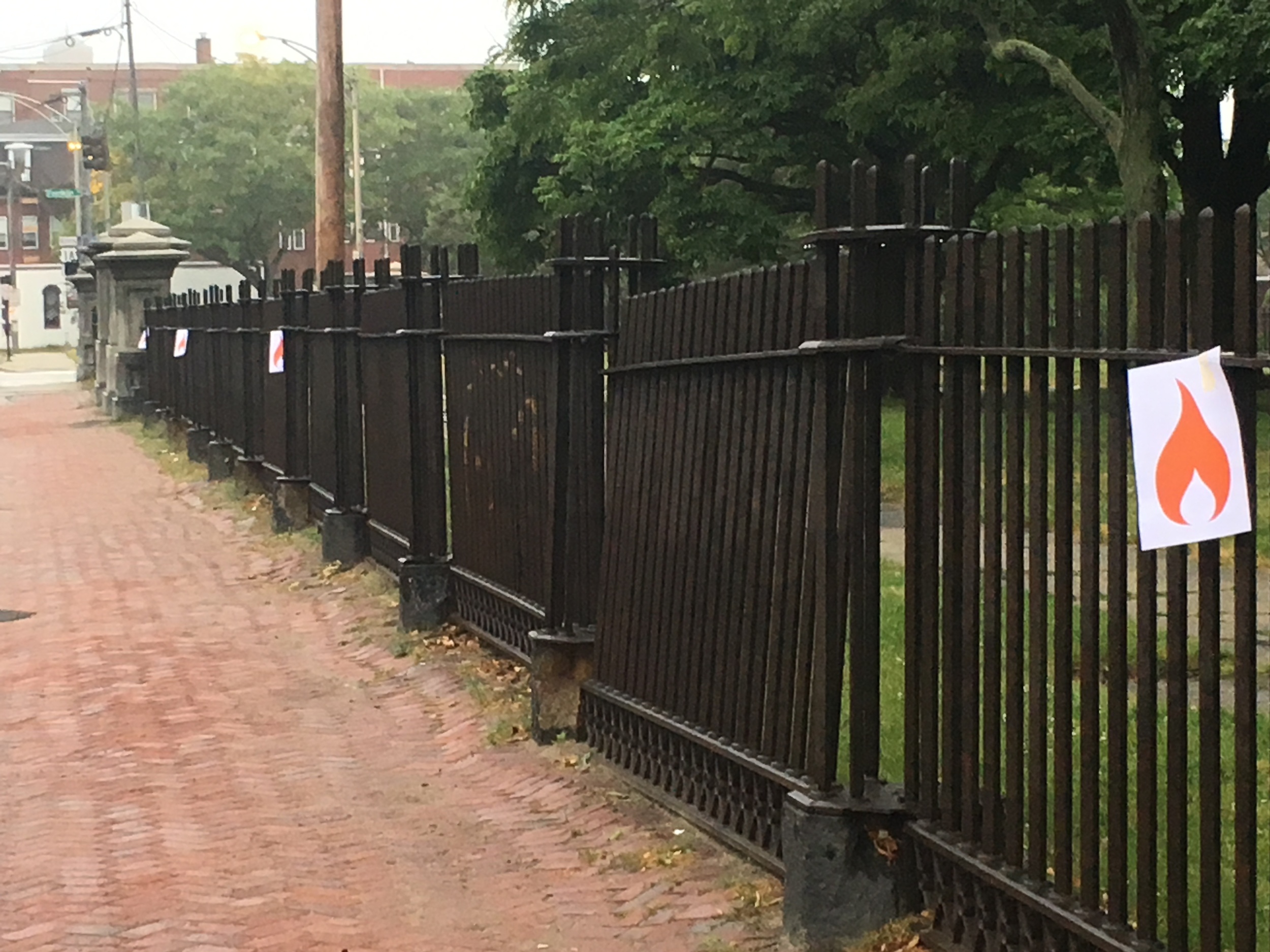By Anastasia Azenaro-Moore
Picture this: It’s a Saturday in the summer of 1872. The peninsula is hot and humid and everywhere you turn, the city is buzzing with industry. Factories along Back Cove are creating shoes, shirtwaists, ropes and other essential goods. Trains rumble up and down Commercial Street transporting goods between the busy wharves and the city’s train stations. With the city’s economy growing, more and more Irish immigrants make Portland their home, settling in the neighborhoods along India Street and Danforth Street, increasing the population of the city by twenty percent in a dozen years. In the middle of this buzz, there lies one oasis; one small section of greenery where one can escape the smell, the heat, the traffic and, perhaps, even the pressures of daily life; Lincoln Park.
Originally called Phoenix Square, until it was renamed to honor President Lincoln in 1867, the park was created in the aftermath of the Great Fire 1866 that destroyed a third of the city. The city purchased its first publicly owned green space with the intent of creating a fire break to prevent future fires from having the same far reaching and destructive effects.
Designed by city engineer Charles Goodell, with elm lined paths, and a three tiered Parisian fountain, installed in 1871, Lincoln Park quickly became much more than a fire break, it became a neighborhood destination and cultural hub. For nearly seventy years, a Farmer’s Market would set up along the park every Saturday from early spring to late fall. Festivals, including a particularly fun sounding Mardi Gras Night in 1920, would occur regularly in the park. Children would play and splash in the fountain as women would show off their Sunday best while strolling along the park’s flower beds.
The 1960s and 1970s were not kind to Lincoln Park. Dutch Elm Disease ravaged Portland’s elm tree population during the 1960s, including those which had defined the park’s pathways. In 1970, the eastern quarter of the park was torn up to make way for the widening of Franklin Arterial. The new highway severed the park from the Munjoy Hill and India Street neighborhoods, the populations the park best served. By 1976, the Farmer’s Market had relocated. As time passed, the city and its inhabitants lost interest in the park. The pathways crumbled, the fountain broke, the wrought iron fences rusted.
That is, until today.
In 2012, Friends of Lincoln Park, a nonprofit, volunteer, organization aimed at advocating for the park, formed. In 2013, Greater Portland Landmarks named Lincoln Park a “Place in Peril” bringing local attention and awareness to the park. This year, the Friends of Lincoln Park is raising funds to restore the fountain which has been missing it’s top tier for decades. The fountain restoration is in conjunction with a re-pavement of the walkways of the park with historically accurate bituminous concrete.
In June, a sculpture by Judith Hoffman entitled “The American Dream” was installed in the park by TEMPOart, a new temporary public art organization. The piece will be up until at least May 2017. This month there will be several events occurring in the park which are free and open to the public.
On August 5th, First Friday, a Scavenger Hunt and exhibition will be held in the park from 5 pm to 8 pm. This event is sponsored by TEMPOart, Greater Portland Landmarks, and Friends of Lincoln Park. The exhibition will feature students at Mayo Street Arts and Oak Street Studio who have been working all summer in sculpture workshops and studying Hoffman’s piece. On August 6th, PICNIC Music and Arts Festival will be hosting their 9th annual summer fair from 11 am to 6 pm in the park. This event will feature over 100 local artists and vendors selling everything from housewares to fine art. There will be live music and tasty food all day.


